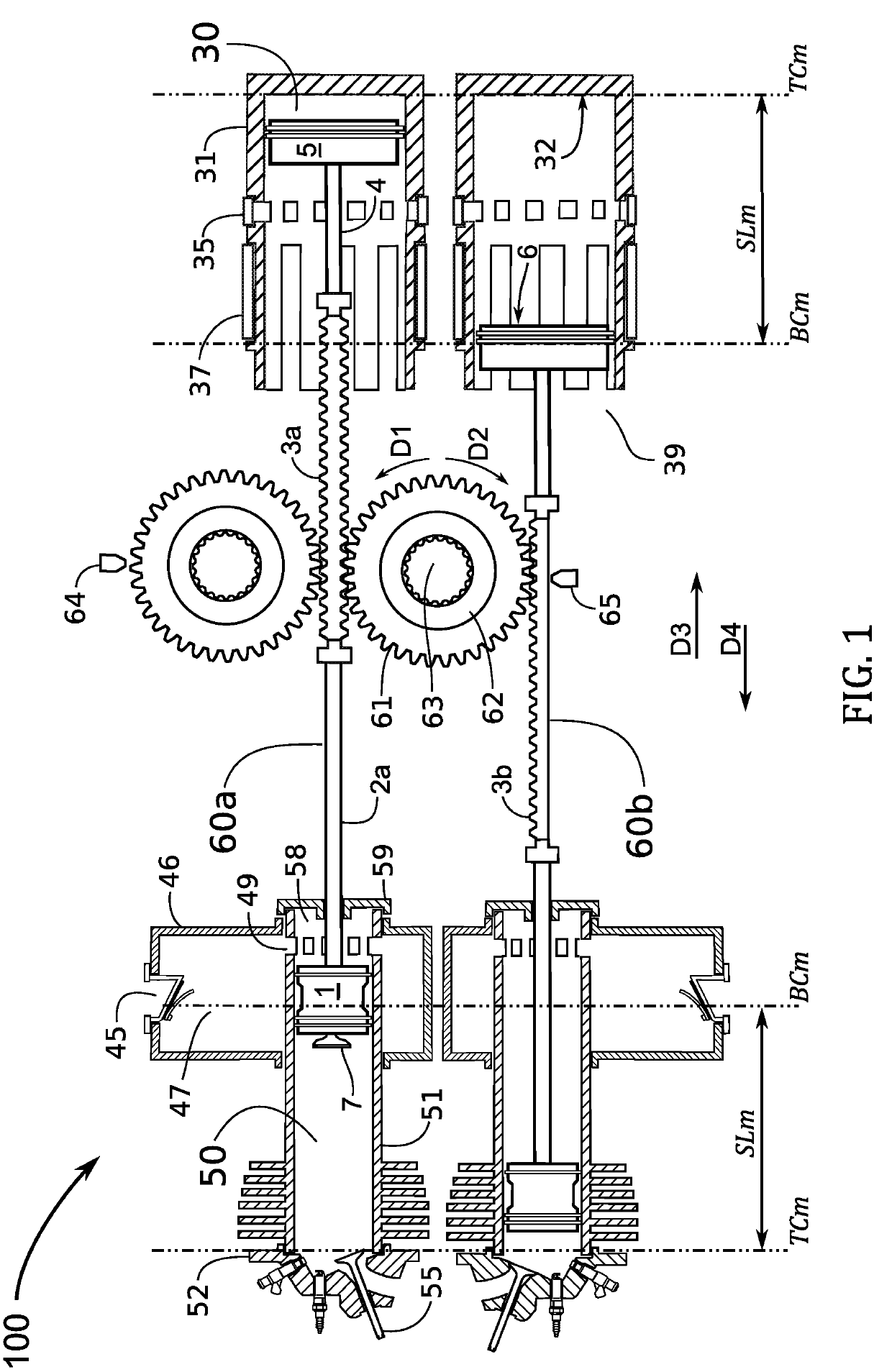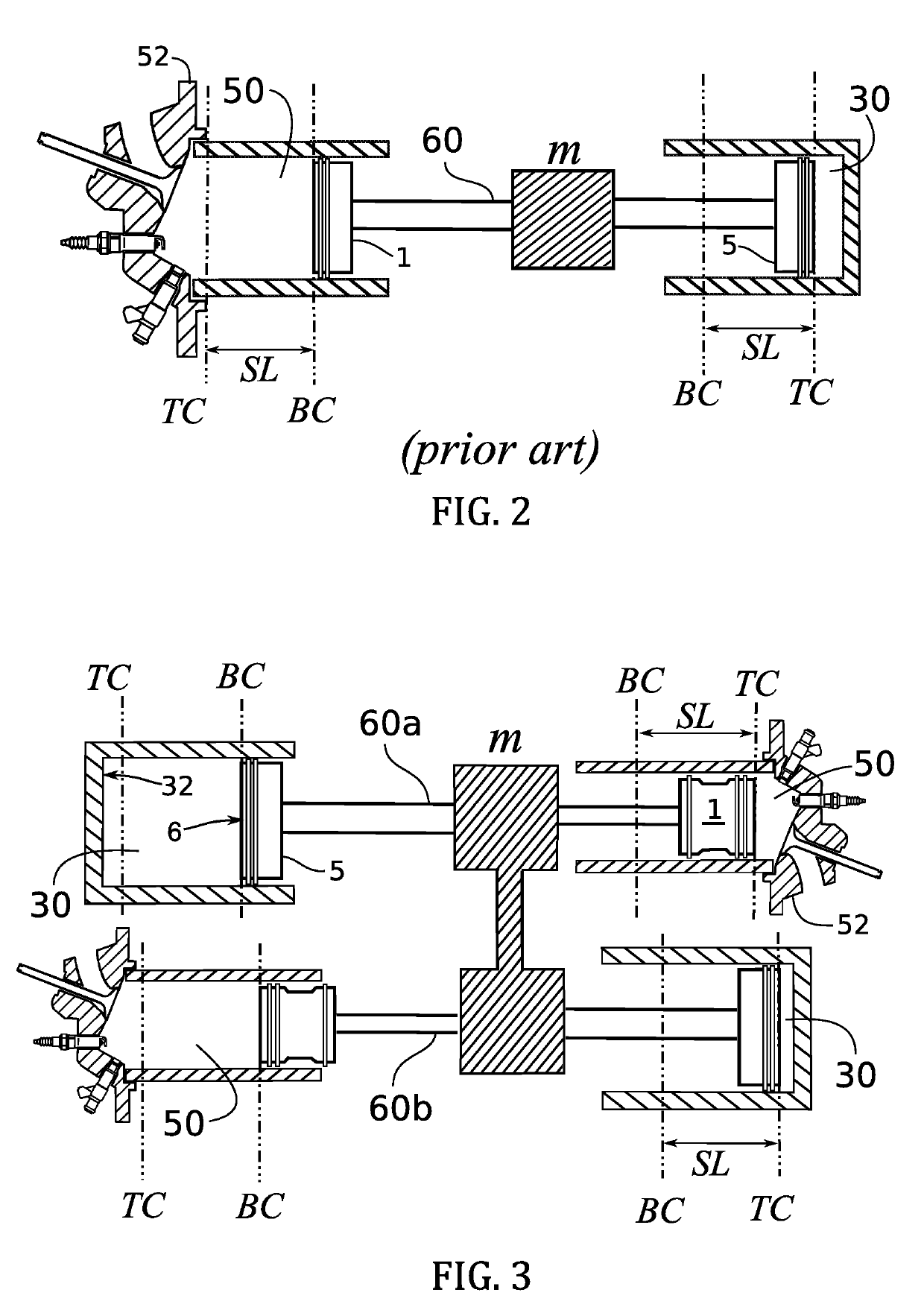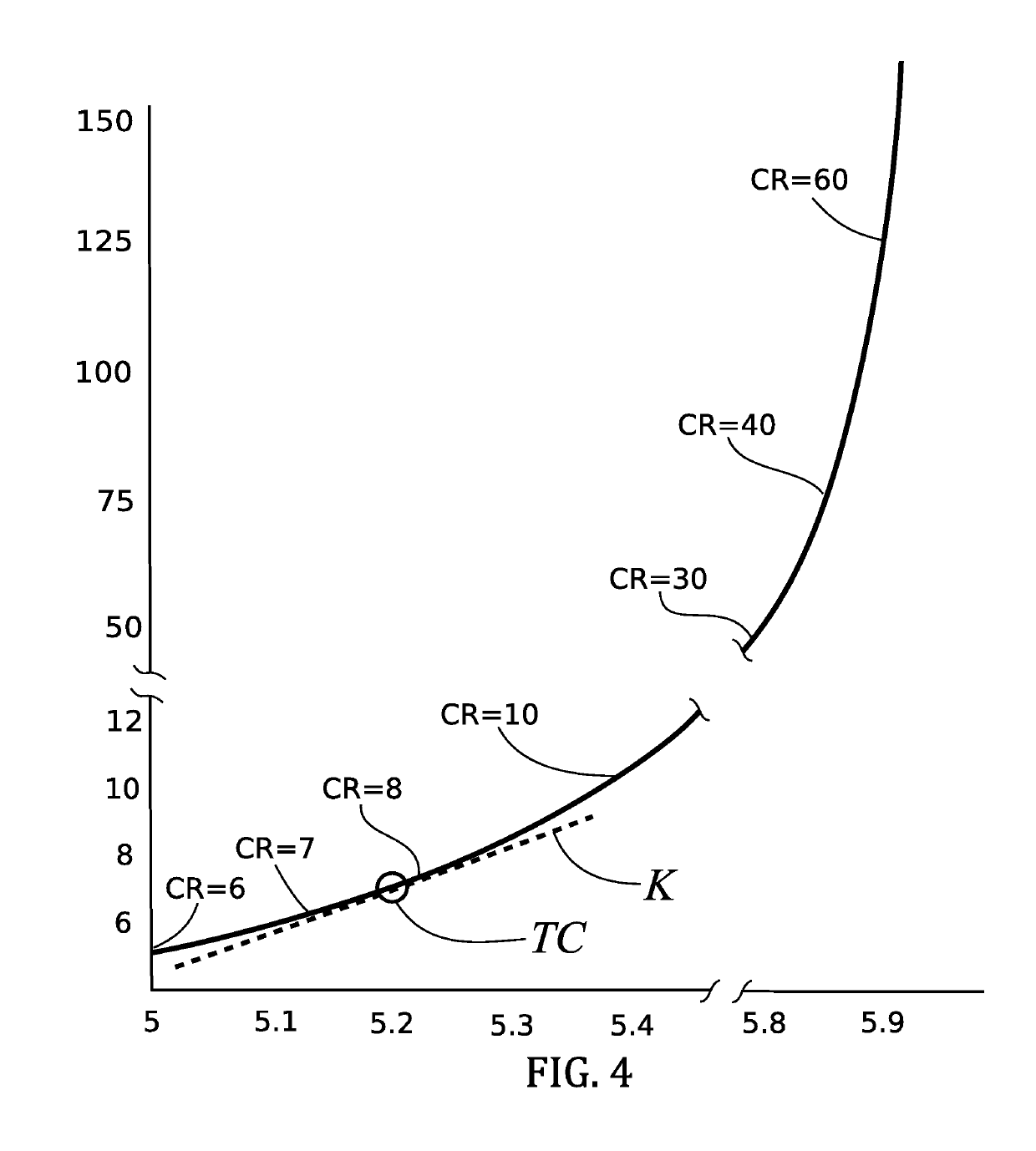Free-Piston Engine
a free-piston engine and free-piston technology, applied in the direction of machines/engines, non-mechanical valves, valve drives, etc., can solve the problems of under-powering performance of advanced fpe designs, unable to expand the technology to other configurations, and difficult to produce useful power levels from advanced designs
- Summary
- Abstract
- Description
- Claims
- Application Information
AI Technical Summary
Benefits of technology
Problems solved by technology
Method used
Image
Examples
Embodiment Construction
[0066]For the spatial terminology of the disclosure FIG. 1 will be used as the reference orientation. The following terminology is presented for descriptive purposes and is not meant to imply functionality. That is, for example, when the term “upper chamber” is used it does not imply that the engine must be orientated in practice with the identified “upper chamber” facing upwards. The terms “upper” and “lower” will refer to the top and bottom of FIG. 1. When discussing two parts having identical functions the suffix a and b may be attached to signify the upper part and lower part. For example, plunger 60a will designate the upper plunger and plunger 60b will designate the lower plunger. The term “inboard” will refer to directions D3 or D4 when the directions point toward the center of FIG. 1. The term “outboard” will refer to directions D3 or D4 when the directions point toward the left-most or right-most sides of FIG. 1. For example, combustion head 52 seals the outboard side of cy...
PUM
 Login to View More
Login to View More Abstract
Description
Claims
Application Information
 Login to View More
Login to View More - R&D
- Intellectual Property
- Life Sciences
- Materials
- Tech Scout
- Unparalleled Data Quality
- Higher Quality Content
- 60% Fewer Hallucinations
Browse by: Latest US Patents, China's latest patents, Technical Efficacy Thesaurus, Application Domain, Technology Topic, Popular Technical Reports.
© 2025 PatSnap. All rights reserved.Legal|Privacy policy|Modern Slavery Act Transparency Statement|Sitemap|About US| Contact US: help@patsnap.com



